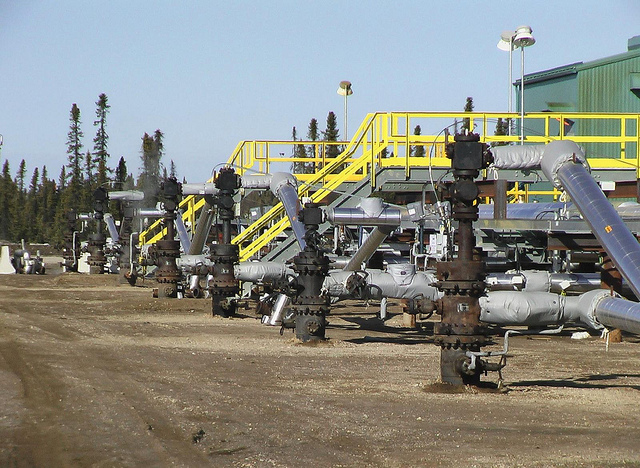The Government of Canada will clearly spare no expense in extolling the environmental virtues of oil sands bitumen. We spend millions in promotion, domestic advertising for our “Responsible Resource Management” and promotion around the world. We lobby in Washington, D.C. and pound the pavements of European capitals, all in aid of defending our wondrous product from those who would malign its benefits.
Unfortunately, as a poster child for environmental values, the oil sands keep giving their backers headaches. Dilbit (bitumen and diluents mixture) leaks have contaminated the Kalamazoo River in Michigan and fouled rural Arkansas. Pipeline leaks in Alberta have forced farmers from their homes, while the wastewater in tailings ponds has leaked toxic chemicals into the Athabasca River.
Masterful public relations turned that around with the commitment to a “Gold Standard” environmental monitoring program, but the failure to prosecute years worth of reported offences undermines the commitment. A recent report, based on years of painstaking collection of data through access to information requests, reveals that fewer than 1 per cent of environmental violations in the oil sands are subject to any prosecution. (Canadian Press, “Study finds little environmental enforcement in oilsands infractions,” July 23, 2013)
As I write this, there is an uncontrollable blowout in an underground oil sands operation in Alberta. According to the story published July 19 in the Toronto Star, Canadian Natural Resources Ltd is dealing with four separate leaks of burbling bitumen and injection water spreading on the ground on the Cold Lake Air Base lands. The “blowout” is from what is called the in situ method of getting bitumen out of the ground.
Up until recently, oil sands mining was primarily conducted by an open pit method. Enormous gaping holes, up to 80 metres deep, were the work places of super-sized trucks and giant hoes to scrape tons of soil and rock, bring it to the surface and process it. With warm water and shaking (a Suncor scientist once described it to me as being like a washing machine), the 10 per cent by volume of bitumen was separated from the rest of the material. In situ is different. Injection wells shoot the water down to where the bitumen is found and the force of water sends the bitumen up through well shafts to the surface. While in situ has the value of not creating visual scarring to the landscape, it actually uses more water than the open pit method, and it uses more energy.
You may have heard the industry boast of reducing the amount of greenhouse gases (GHG) released per barrel of bitumen produced — a measurement called “carbon intensity,” initially created as a measure by George W’s White House. For a while it was true that, while overall GHG levels from oil sands continued to increase as production volumes rise, the amount per barrel was going down. No longer. Thanks to the increase in in situ methods, that decline has stopped and the amount of GHG per barrel is also rising, as production volumes increase.
This underground blowout is, as far as I know, a first. And despite the bland reassurances from the company that they have the mess under control, that does not seem to be the case. The situation was described in the Toronto Star story (‘Nobody understands’ spills at Alberta oil sands operation,” July 19, 2013) as “chaos.” A government scientist, speaking on the condition of anonymity, was quoted by the Star as saying,
“Everybody (at the company and in government) is freaking out about this…We don’t understand what happened. Nobody really understands how to stop it from leaking, or if they do they haven’t put the measures into place.”
Against this background, the Government of Canada has its hands full maintaining its high-priced sales job to sell the world on the idea that oil sands bitumen is clean, green and ethical. The “ethical oil” nonsense, coined by Ezra Lavant and immediately seized upon by Natural Resources Minister Joe Oliver, was based on the idea that anything from a “good” country like Canada was inherently better than the same product from a “bad” country, like Saudi Arabia. On that basis, our asbestos exports are “ethical” too. That public relations spin does not work as well now that the Peoples’ Republic of China is mining bitumen in Alberta. Should the Government of Canada only apply its “ethical oil” promotion to bitumen coming from mines owned by democracies, as opposed to totalitarian states? To ask the question is to answer it.
My daughter was recently interning in the European Parliament with a Green MEP from France. She was surprised how much discussion there was about Canada and the oil sands. At one public discussion of Canada’s push for bitumen, a former Finnish Minister of the Environment remarked that she had never seen any government lobby so hard for one product or industry as Canada is lobbying for the oil sands.
Maybe the oil sands industry should do Joe Oliver and the propaganda effort a favour and try to avoid pipeline leaks, underground blowouts and environmental violations. It is awfully hard when your poster child won’t behave.
Originally published in the Hill Times.
Photo: Suncor Energy/flickr



